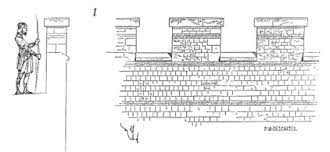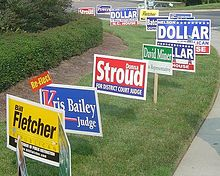6 – Unobtrusive Measurement
Why Should I Care?
Definitions
Unobtrusive Measurement:
The use of physical evidence, nonparticipant observations, and archival or documentary evidence without the knowledge of participants.
Artefacts:Artifacts:
a physical object made by a human being, often embodying cultural or historical interest.
Usefulness
This Tomethod studyis humanespecially activityuseful withoutwhen we want to measure what humans knowing,leave usingbehind, tracesin terms of activity,accumulated objects, artifacts, infrastructure, or objectswhat madehumans byhad humans.to say in messages such as advertisements, news media, works of art, or graffiti. Sometimes it's the only way to gather evidence because the humans in question are deceased, or they are not open to exchange information.
Objects of Measurement
|
Type of Object |
Yes |
No |
Maybe |
Example |
|
Personal Characteristic |
|
|
X |
Kitchen countertops height - clothes |
|
Socio-Demographic Characteristic |
|
|
X |
Parking lot |
|
Opinion |
|
|
X |
Political |
|
Motivations |
|
X |
|
|
|
Ideology |
|
|
X |
|
|
Biases / Prejudice |
|
|
X |
|
|
Preferences |
X |
|
|
garbage |
|
Personal History / Background |
X |
|
|
flags, tombstones |
|
Family Dynamics |
|
|
X |
|
|
Cultural History |
X |
|
|
|
|
Perception / Self-Perception |
|
X |
|
|
|
Aptitude /Ability |
|
|
X |
|
|
|
|
|
X |
|
|
Level of Knowledge |
|
X |
|
|
Sampling
Populations are widely defined and usually large, depending on the community. Population size may be unknown.
Samples are usually non-random, convenience and/or purposive.
For example, a researcher decides to look for gang graffiti in the city. Each graffiti found increases the sample size, and the population size. There is no registry of graffiti. It is impossible to estimate the sample share of population because the population is unknown.
Again, let's imagine a researcher who is analyzing Greek statues. It is difficult to know the exact number of statues that were produced because many of them may have been lost, stolen, plundered, broken in war, or destroyed by enemy raids.
You often get to sample only what is left.
Instruments
ArtefactsArtifacts are recorded using an array of mediums. Scientists will use photography, video camera, drawings, notes,and etc.notes. They will map their findings and tally results in tables.
Scientific Power
Exploratory:
Unobtrusive Measurement is very fitting for exploratory research projects. If you hear about a certain group of people, you may not want to approach them for interviews at first occasion. It might be best to learn their ways from their architecture, physical presence, objects left behind.
For example, the difference between a fortified castle and a posh residence is that soldiers can hide behind the crenels on the roof of the castle. It may not be safe to come knocking on the door.
Objects are also more practical to analyze at the beginning of a research project. The first thing youwe see isare objects and traces. They are the “trail” to follow.
Descriptive:
This method is also quite useful for descriptive studies. Actually, people often underestimate the power of simple observation.
For example, if you ask a man to describe his income, he may reply that he is not very wealthy. Of course, if he is driving a German sports car, and wearing a bespoke English suit... it makes his assertion difficult to believe. Observations of artifacts, objects and physical traces can complement other methods, such as field work, survey, and content analysis.
The more you see, the more you describe. But
Explanatory:
Some isphenomena can be explained using Unobtrusive Measurement. For example, carbon dating objects found in archeological digs, we can estimate with greater precision the endperiods when objects were used, and the technological changes undergoing in specific areas. A study of the lineArctic has shown that Inuit in Canada were spinning their own yarn before the arrival of the Viking in the coast of Labrador. This finding contradicts previous assertions that the Inuit learned to spin yarn from the Viking, who were known for scientificmany power.technologies including smelting iron ore from the underside of grassy patches on the Island of Newfoundland.
Inuit Spun Wool Prior to Viking Contact
https://www.rcinet.ca/en/2018/07/27/indigenous-norse-spinning-archeology/
Steps
- Identify population/topic
- Choose recording tool
- Record audio-visual
- Analyze, Interpret, and Report
Advantages
- Useful when people are unwilling to answer surveys
- Reveal habitual behavior
- Useful for people who are not articulate (children) (or lost in translation)
- Allows to triangulate with other methods, to check validity of results
Disadvantages
- Lack of context
- Physical evidence is limited in objects of measurement
- Time-consuming
- Hazardous (ex: gangs, drug rings)
- Ethical considerations if researcher needs to be covert
Reporting
Spatial Maps
Descriptive Text
Synthesis Tables
Preferred Disciplines
Anthropology, Geography, Sociology, Psychology, History
If you are interested in being trained in Unobtrusive Measurement, one would recommend studying anthropology and geography. These disciplines are devoted to the method and use it tremendously. Other disciplines are also keen on using the method, such as sociology, psychology, and history, but they remain somewhat on the sidelines of the method, having their own preferences.
Other Non-scientific Disciplines
Applications in Marketing, Criminology, Journalism
Any analyst can get caught up by working from home, or the office, using all sorts of data. However, the reader will see the difference when someone is writing with some on-the-ground experience. You can use observations to build your introduction, to add character, or color, to the writing. Observations of places, infrastructure, or art, cannot be argued away. You saw these things with your own eyes and they exist. They may be anecdotal, but they exist.
Not usefulcommonly forused by
Economists, Political Scientists
Economics usually shies away from the qualitative methods, especially something such as unobtrusive measurement. The analysis of economic phenomena is however not confined to the discipline of economics. For example, anthropologists regularly discuss the study of economic systems in what they term 'material culture'. This has usually to do with simpler technologies, in less advanced civilizations, or past civilizations.
This does not mean that economists should keep to spreadsheets. They should have an idea of what's going on in the world, physically speaking. Are companies stocked with actual inventory? Are mining operations producing adequate supply? Home mortgages might be on the topic)rise, but what do the homes look like?
Canadian Banker in Africa Anecdote
True story: A Canadian banker is working with a developing country to establish community financial services. A car loan application comes onto his desk, and by looking at the numbers, the Canadian professional instructs the bank officer to approve the loan. The bank officer notices there is a photo of the car to be purchased. It is a used car, and the hood is closed. Before signing off on the loan, he decides to see the car for himself. It had no engine.
Moral of the story? People lie. Sometimes you have to see things with your own eyes.
Political scientists also tend to rely on other methods. They use survey data and content analysis profusely. Again, this does not mean they should not be sensitive to the physical manifestation of human activity. For example, the existence of cities, and material accumulation of wealth, is not equally dispersed over land. This will have political consequences in elections, and other political activities. Driving around neighborhoods, you can get a pretty good idea of the political parties in favour, by observing the monochromatic colored lawn signs people use to show their support for one party or the other.
ThinkColor PieceCoded Politics
photo ofcredit: your neighborhood. What could you observe about it (passively) to give people an idea who lives in this area?


